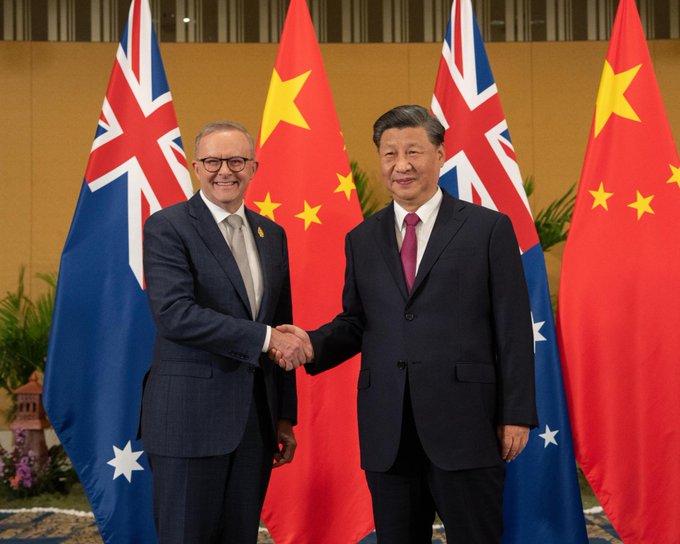Tensions in Asia-Pacific diplomacy have intensified as the United States presses Australia for clarity on its potential role in a conflict over Taiwan. Amid growing concerns about China’s assertive posture in the region, Washington is reportedly seeking explicit commitments from Canberra regarding its stance and actions should hostilities erupt. This development marks a critical moment in China-Australia relations, highlighting the complex geopolitical dynamics at play and the strategic calculations facing both allies in the shadow of escalating cross-strait tensions.
US presses Australia on Taiwan war contingency plans amid rising regional tensions
The United States has intensified its inquiries into Australia’s strategic posture regarding a potential conflict over Taiwan, reflecting growing concerns about regional stability amid escalating tensions with China. American officials are reportedly seeking detailed assessments of Australia’s military readiness and political will to engage should a confrontation arise. This move underscores Washington’s aim to ensure its allies in the Indo-Pacific are aligned and prepared for worst-case scenarios, especially as Beijing’s assertiveness in the Taiwan Strait continues to challenge the status quo.
Key areas under scrutiny include:
- Australia’s defense capabilities to support joint operations in the event of conflict.
- Contingency planning that could facilitate coordinated responses with US forces.
- Potential diplomatic repercussions, both with China and within regional partnerships.
| Factor | Australia’s Consideration | US Expectations |
|---|---|---|
| Military Support | Evaluate air and naval deployment capabilities | Full interoperability with US forces |
| Political Commitment | Clarify stance on direct engagement | Explicit support for Taiwan’s defense |
| Regional Diplomacy | Balance relations with China | Strengthen Indo-Pacific alliances |
Balancing act China Australia relations face challenge as security concerns intensify
Growing geopolitical tensions have placed Australia at a critical junction, as it navigates the delicate balance between maintaining strong economic ties with China and addressing increasing security concerns influenced by U.S. demands. Washington’s inquiry into Australia’s potential military stance in a hypothetical Taiwan conflict underscores the heightened pressure Canberra faces from its key ally. This situation echoes broader fears of escalation in the Indo-Pacific region, forcing Australia to reassess its strategic posture without alienating Beijing.
Experts highlight several key challenges Australia must contend with, including:
- Economic dependency: China remains Australia’s largest trading partner, complicating any defense-oriented pivot.
- Alliance commitments: The U.S.-Australia partnership calls for clarity on military roles, especially under the AUKUS framework.
- Regional stability: Any shift risks disrupting diplomatic relations within Southeast Asia and the broader Pacific community.
| Factor | Implications | Australia’s Dilemma |
|---|---|---|
| Trade | High volume exports to China | Economic risk if tensions escalate |
| Security | US strategic expectations | Commitment vs autonomy debate |
| Public opinion | Growing skepticism of conflict involvement | Political ramifications at home |
Experts urge Canberra to clarify strategic commitments and strengthen diplomatic communication
Amid growing tensions in the Indo-Pacific region, there is an urgent call from policy analysts and security experts for Canberra to provide clear and consistent indications of its strategic stance regarding potential conflict scenarios, particularly concerning Taiwan. The ambiguity surrounding Australia’s defense commitments risks undermining both domestic confidence and allied trust. Experts emphasize that without explicit articulation of its intentions, Australia could face diplomatic isolation or be compelled into reactive positions that may not align with its national interests.
Enhancing diplomatic communication channels with key partners, especially the United States and China, is seen as pivotal in managing escalating uncertainties. Clear messaging would reduce the risk of miscalculation and foster more predictable interstate relations. Key recommendations include:
- Formalizing defense policy declarations to clarify when and how Australia might engage in regional conflicts.
- Establishing regular high-level dialogues with Beijing and Washington to pre-empt misunderstandings.
- Investing in public diplomacy efforts to convey Australia’s strategic priorities transparently to international audiences.
| Priority Area | Strategic Action | Implication |
|---|---|---|
| Defense Clarity | Publicly define engagement rules | Reduces uncertainty in alliances |
| Diplomatic Outreach | Enhance bilateral talks | Mitigates risk of escalation |
| Strategic Communication | Launch information campaigns | Improves global understanding |
The Conclusion
As tensions in the Indo-Pacific continue to escalate, the spotlight on China-Australia relations grows ever more intense. With the United States pressing Australia for clarity on its stance in a potential conflict over Taiwan, Canberra faces a delicate balancing act between its economic ties with Beijing and its strategic alliance with Washington. How Australia navigates this geopolitical crossroads will not only shape regional stability but also redefine its role on the global stage in the years to come.




